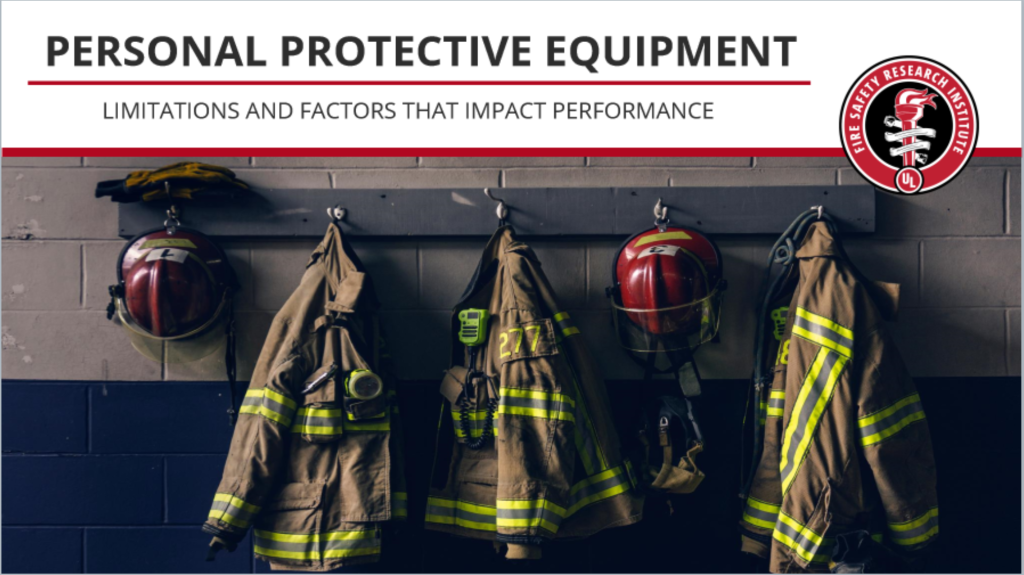
Online Training Available: Personal Protective Equipment - Limitations and Factors that Impact Performance
Changes in personal protective equipment (PPE) have had profound effects on firefighter safety. While PPE ensembles protect better than ever before, firefighters are still at risk for exposure to fireground contaminants. Interfaces between PPE elements around the neck, wrists, waist, and lower legs may be vulnerable to smoke ingress which can occur through gaps in protection provided by today’s turnout gear. At the same time, as the fire service has collectively become more aware of the health risks from chemical exposure on the fireground, many departments are cleaning PPE more frequently.
In collaboration with the Illinois Fire Service Institute (IFSI), National Institute for Occupational Safety and Health (NIOSH), and Skidmore College, the Fire Safety Research Institute (FSRI), part of UL Research Institutes has developed “Personal Protective Equipment: Limitations and Factors that Impact Performance,” an online training course to increase awareness of protective characteristics of PPE and potential impacts of cleaning and doffing practices so that firefighters may better protect themselves and reduce chemical exposures on the fireground.
“We hope that the information derived from this work can assist in addressing vulnerabilities in PPE, provide you and your fellow firefighters with knowledge on how to better protect yourselves, and ultimately reduce exposures on the fireground.”
–Richard Kesler, Research Engineer, FSRI
After taking this course, firefighters will be able to:
- Compare how different hood designs affect the protection provided to the head and neck from fireground contaminants.
- Describe the effects of cleaning on the protective properties of PPE.
- Explain how contaminants break through interfaces in PPE to reach clothing and skin.
The information shared in this course is based off the findings from the PPE Interface Study that builds off of the IFSI-FSRI-NIOSH research conducted during the “Cardiovascular and Chemical Exposure Risks in the Fire Service” project. Through this study our team has evaluated the impact of repeated cleaning of firefighter PPE along with PPE interface design on smoke exposure (gas and particulate) using mannequin and human subject testing. Learn more about the research behind this training here. This project was funded through a grant to IFSI from the Department of Homeland Security Federal Emergency Management Agency’s Assistance to Firefighters Grant (AFG) Program.
“Special thanks to the IFSI team for their project leadership and to the National Institute for Occupational Safety and Health, and Skidmore College for partnering on these experiments. Our team’s combined research capabilities allowed us to add to a growing understanding of PPE capabilities and limitations.”
– Gavin Horn, Research Engineer,FSRI
Access the course here.